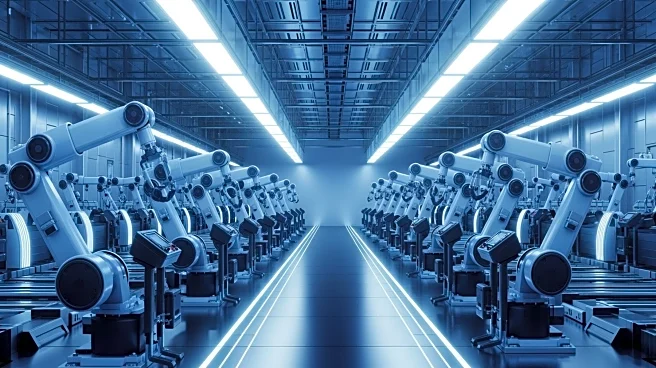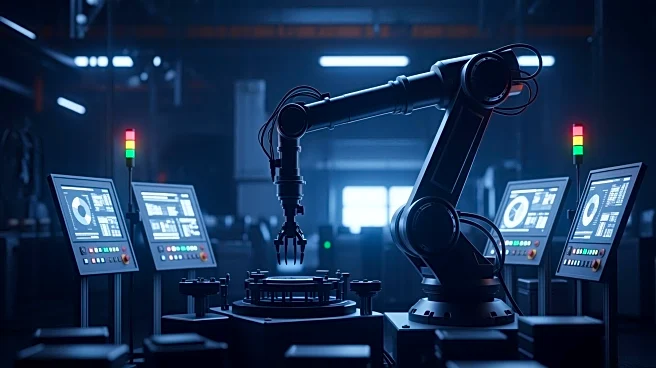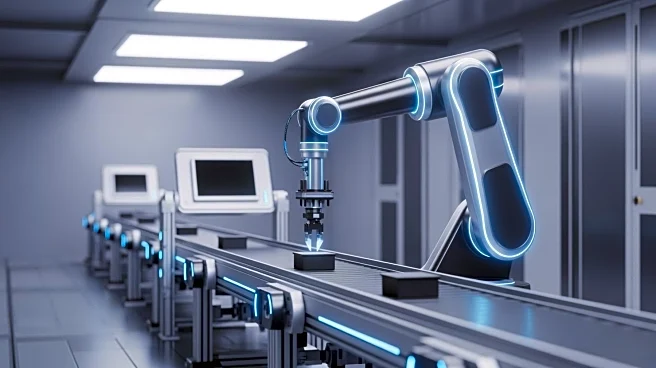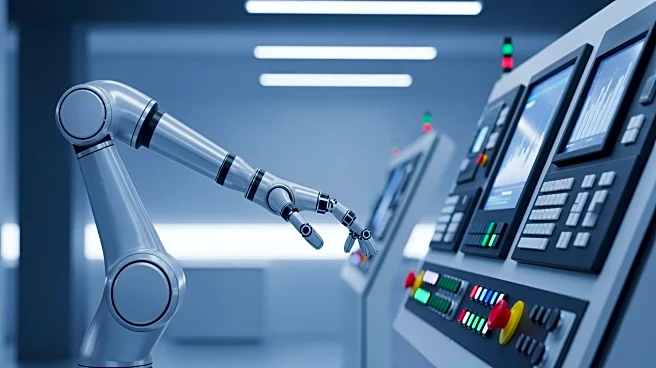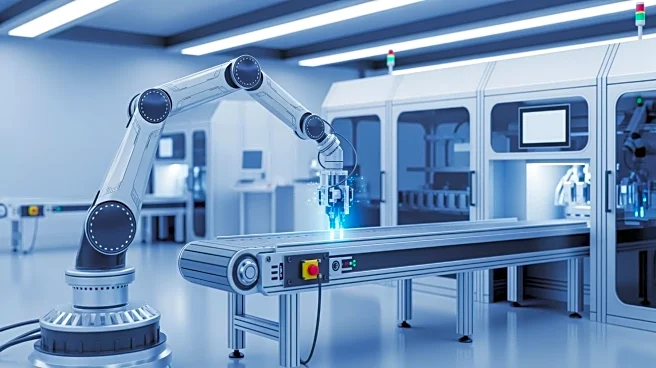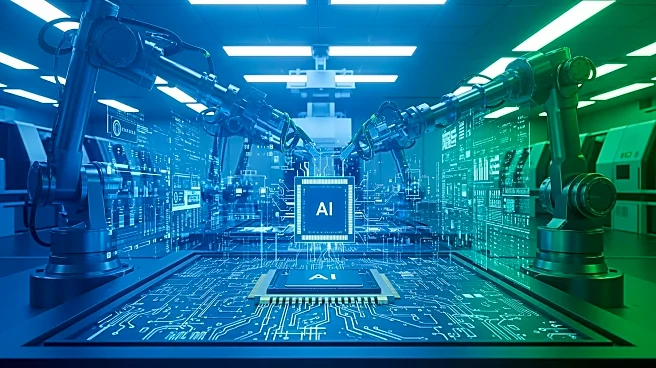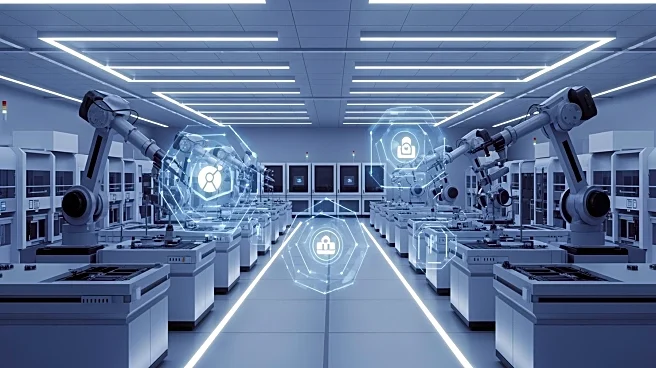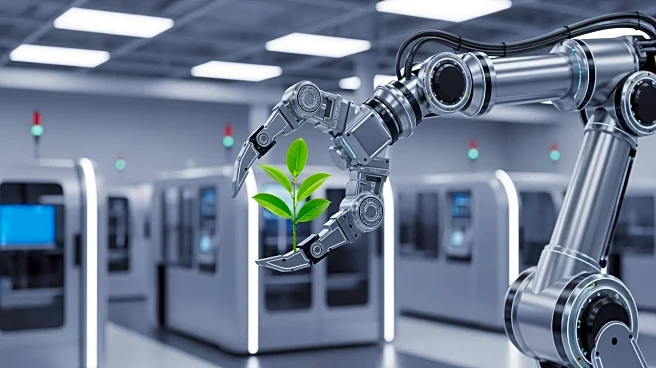What's Happening?
A significant shift is occurring in the manufacturing industry with the rise of 'dark factories,' which are highly automated facilities requiring minimal human presence. This concept, also known as 'lights-out'
manufacturing, is gaining traction due to global labor shortages, rising human resource costs, and decreasing costs of advanced automation. These factories utilize AI and machine learning systems to drive autonomous decision-making, predict maintenance needs, and optimize factory operations. While fully automated facilities are rare, many factories are adopting partial automation, where skilled workers oversee production shifts. Specialized lighting systems are crucial for machine vision systems to ensure quality control, as they provide the necessary contrast for cameras to detect defects or errors.
Why It's Important?
The adoption of 'dark factories' represents a transformative trend in manufacturing, promising significant cost savings and operational efficiencies. By reducing reliance on human labor, these facilities can mitigate the impact of labor shortages and high human resource costs. The integration of AI and machine learning enhances supply chain flows and factory optimization, potentially leading to fewer errors and improved productivity. Companies like Tesla, GE, and Intel are already implementing these technologies, indicating a broader industry shift towards automation. This development could reshape the manufacturing landscape, affecting employment patterns and economic dynamics.
What's Next?
As 'dark factories' continue to gain traction, further advancements in automation technology are expected. Companies may increasingly invest in AI and machine learning to enhance their manufacturing processes. The role of skilled workers may evolve, focusing more on overseeing and maintaining automated systems rather than direct production tasks. Additionally, the demand for specialized lighting systems and robust digital transformation strategies will likely grow, supporting the expansion of lights-out manufacturing. Stakeholders, including businesses and policymakers, will need to address the implications of reduced human labor in manufacturing, considering potential impacts on employment and economic policies.
Beyond the Headlines
The rise of 'dark factories' raises ethical and cultural questions about the future of work and the role of humans in manufacturing. As automation reduces the need for human labor, there may be concerns about job displacement and the need for workforce retraining. Additionally, the reliance on AI and machine learning for decision-making in manufacturing processes could lead to discussions about accountability and transparency in automated systems. The shift towards automation may also influence cultural perceptions of work, as traditional manufacturing roles evolve or diminish.
